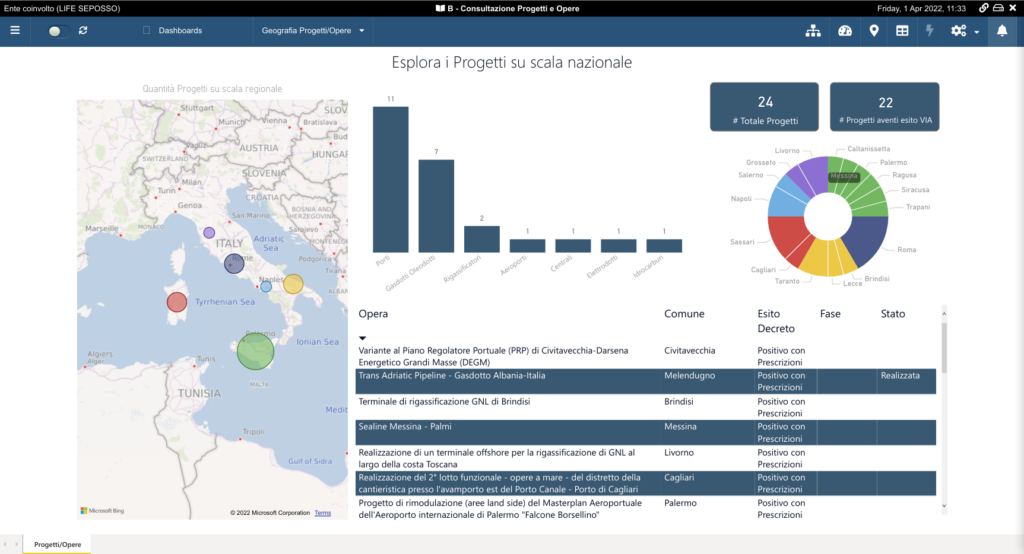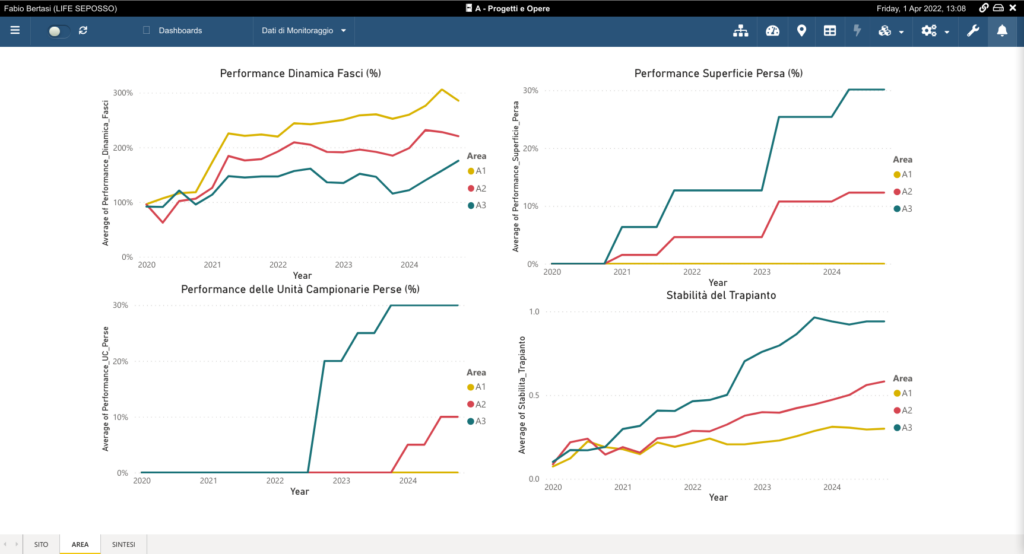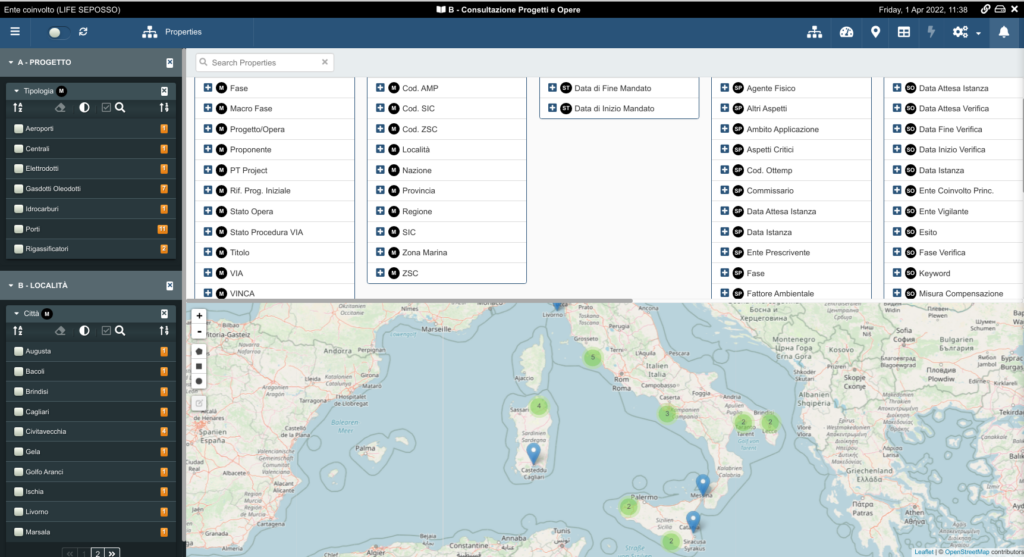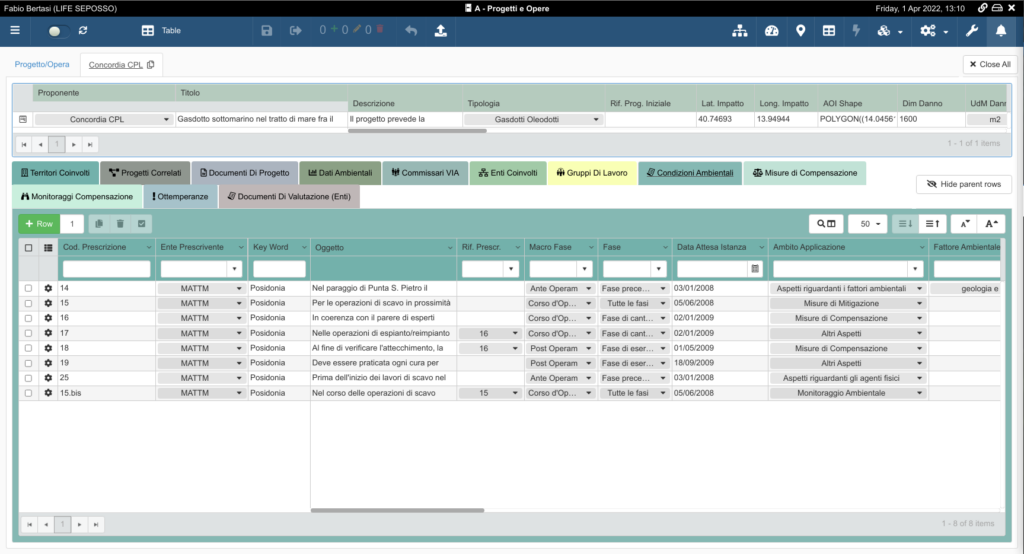Action B.3: Developing electronic systems to support transplant Governance
In the context of action B.3, “Electronic systems to support transplanting governance”, whose aim is to develop and implement easy-to-use electronic systems to support the governance of transplants, stimulating the flow of data and information to the various interested parties, the Posidonia Transplanting Web Platform (PTWP) was created.
The platform was created in an All-in-One technological environment for the design, configuration and use of digital application services (web and mobile) aimed at the digital transformation of collaborative environmental impact assessment processes of works that concern the meadows of Posidonia oceanica.
The PTWP was created by exploiting the tools and potential of the eLegere technology to support and increase the efficiency in the management of the operational flows of the entire environmental assessment process, from the definition of the environmental conditions, to the verification of the related compliance. The PTWP allows the centralization of data, environmental and procedural documents. It guarantees quality, reliability and security in the governance of data and processes, which involve the various stakeholders (Competent Authority, CTVA, Bodies involved, Supervisory Bodies, Proponents, citizens) in the EIA procedures and the management and monitoring of Posidonia oceanica transplants.

Flow diagram of the EIA process based to current Italian legislation: the interactions between the actors directly involved in the decision-making processes are schematized in a model that traces the main moments of the process that leads to the realization of Posidonia oceanica transplants as a compensation measure. The scheme is the basis of the rules on which the PTWP was set.
Through advanced visualization tools shared in the PTWP, the different stakeholders can control in an integrated way the procedural flows, the documentation, the data environmental factors, as well as the main monitoring parameters and metrics of P. oceanica carried out as compensation measures.

Graphic panel summary of case studies in PTWP: the case studies of EIAs with potential impact on P. oceanica meadows or which have led to the realization of transplants as a compensatory measure are graphically and synthetically represented.
The Proposers of projects and works can consult and use environmental data for Impact Studies Environmental, enter the detailed information of your works/projects for EIA applications, track the progress of environmental conditions compliance applications, such as the realization of P. oceanica transplants and related monitoring.
Furthermore, the Proponents can in turn provide environmental data and contribute to their collection and centralization in the PTWP, cataloguing them according to the INSPIRE Directive.
The environmental data collected in the PTWP therefore become usable and reusable for research, evaluation and verification activities by other actors, and usable in the study and planning phase for other Proposers.
The platform as a collaborative tool allows Competent Authorities to track and manage the entire administrative flow of the EIA process. The Environmental Assessment Technical Committee can use a work environment shared with the Bodies involved, for the management of the documentation on environmental assessments which envisage the transplants of Posidonia oceanica as a compensation measure, the drafting of the prescriptive frameworks and the verification compliance with the control of schedules.
The Technical Operators and Scientific Experts involved by the Proponent for the realization of the transplant can plan, track and monitor the transplants of Posidonia managing specific transplant information and technical documentation. For the purposes of monitoring the transplantation of Posidonia, they manage the sampling plan and the data collection of the relative monitoring, based on the transplantation techniques adopted. They manage the data flow of the individual monitoring campaigns, also collecting sampling data in the field thanks to integrated tools on the mobile side.
All stakeholders, directly and indirectly involved in projects and works with possible impacts on Posidonia oceanica, they can access the PTWP and follow the transplant governance in real time. In particular, through reports and interactive dashboards they can be informed in a concise and usable way on the trends of the parameters and metrics for verifying the success of the transplants.

Graphic Panel presentation of the trend of the main parameters of successful transplantation. The graphs are created automatically by PTWP based on the monitoring data periodically entered into the platform.
The preparation of the PTWP for interoperability with other systems (e.g. GIS) can contribute to the management of transplants, both as a tool for their protection and for integrated planning of the maritime space, in compliance with the Maritime Spatial Planning directive (MSP – 2014 /89/EU)


